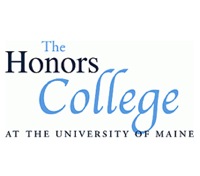Below is a summary of the abstract you submitted. Presenting author(s) is shown in bold.
If any changes need to be made, you can modify the abstract or change the authors.
You can also download a .docx version of this abstract.
If there are any problems, please email Dan at dar78@pitt.edu and he'll take care of them!
This abstract was last modified on March 14, 2023 at 1:10 p.m..

Bacteriophages are the most abundant biological entity in the biosphere, outnumbering the global population of bacteria by a ten-fold scale. Actinobacteriophage are a diverse group of viruses that infect bacteria within the phylum Actinobacteria. Research on the diverse content of their genomes offers opportunities for new applications to the fields of human health and biotechnology. Through the Science Education Alliance-Phage Hunters Advancing Genomics and Evolutionary Science (SEA-PHAGES) program at the University of Maine, the bacteriophage Yummy, was isolated and characterized. Yummy was isolated using an enrichment technique from a soil sample collected from the Faye Hyland botanical gardens at the University of Maine, Orono. It belongs to cluster CT, a group of strictly lytic phages. The Yummy genome is 45,878 base pairs long, with 60.4% GC content and encodes 71 protein-coding genes. The left arm encodes predominantly forward-oriented structural genes. The right arm carries predominantly reverse-oriented replication genes including DNA polymerase I (gp45) and a RecA-like DNA recombinase (gp42) and twelve reverse-oriented genes at the genome end.
